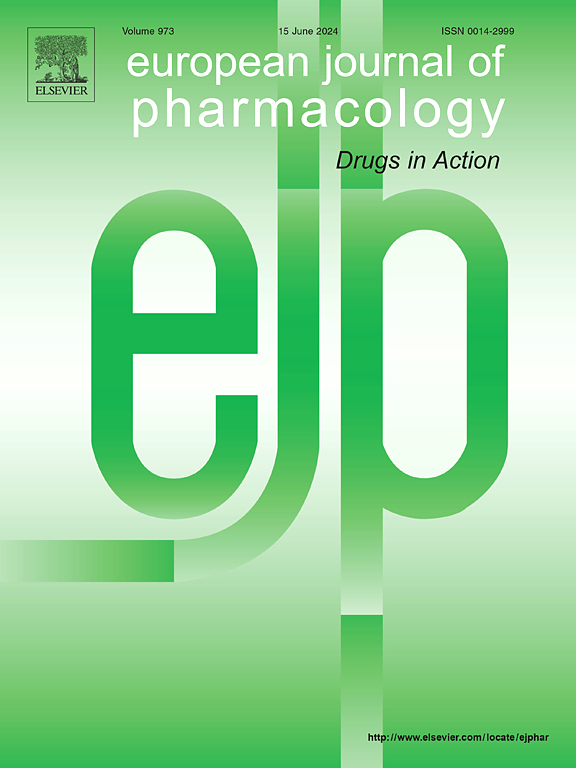药物相关性高泌乳素血症:基于FAERS数据库的综合歧化分析。
IF 4.2
3区 医学
Q1 PHARMACOLOGY & PHARMACY
引用次数: 0
摘要
高催乳素血症(HPRL)是临床上重要的不良事件,需要仔细监测。本研究旨在利用FDA不良事件报告系统(FAERS)在2004年第一季度至2024年第一季度的数据,确定与HPRL相关的药物。歧化分析用于识别潜在的药物信号。进行敏感性分析,评估与这些药物相关的HPRL信号的稳定性和强度,并通过分层检查不同年龄和性别的信号差异。通过发病时间(TTO)分析,探讨影响HPRL发病的因素。歧化分析确定了6个主要解剖系统中与HPRL相关的39种药物,其中大多数(N=29)影响神经系统。值得注意的是,这些药物大多属于精神药物类别,包括非典型抗精神病药物(AAPs, N=13)、典型抗精神病药物(TAPs, N=5)和选择性血清素再摄取抑制剂(SSRIs, N=5)。敏感性分析表明,大多数信号仍然稳定,利培酮对HPRL的信号最强,其次是咪硫pride、帕利哌酮、氟非那嗪和噻嗪。分层分析显示,雌性对HPRL有较强的信号。与18-44岁的个体相比,≥45岁的个体表现出较弱的信号,而未成年人的信号因药物而异。TTO分析显示,与aap相关的HPRL在女性中表现较早,使用aap或SSRIs的未成年人发病较早。总之,我们确定并排序了与HPRL相关的药物,主要是精神药物,并观察到不同性别和年龄的信号强度和发病时间的变化。这些发现强调了基于特定药物、性别和年龄的个体化HPRL筛查的重要性。本文章由计算机程序翻译,如有差异,请以英文原文为准。
Drug-associated hyperprolactinemia: A comprehensive disproportionality analysis based on the FAERS database
Hyperprolactinemia (HPRL) is a clinically significant adverse event that requires careful monitoring. This study aims to identify the medications associated with HPRL using data from the FDA Adverse Event Reporting System (FAERS) between 2004Q1 and 2024Q1. Disproportionality analysis was performed to identify potential drug signals. Sensitivity analysis was conducted to assess the stability and strength of HPRL signals associated with these medications, as well as to examine signal differences by age and gender through stratification. Time-to-onset (TTO) analysis was performed to investigate the factors affecting the onset of HPRL. Disproportionality analyses identified 39 drugs related to HPRL across six main anatomical systems, with the majority (N = 29) affecting the nervous system. Notably, most of these medications belong to psychotropic categories, including atypical antipsychotics (AAPs, N = 13), typical antipsychotics (TAPs, N = 5) and selective serotonin reuptake inhibitors (SSRIs, N = 5). Sensitivity analysis indicated that most signals remained robust, with risperidone exhibiting the strongest signal for HPRL, followed by amisulpride, paliperidone, fluphenazine, and thioridazine. Stratified analysis showed that females had stronger signals for HPRL. Compared to individuals aged 18–44, those aged ≥45 exhibited weaker signals, while the signals in minors varied by drug. TTO analysis revealed that AAP-related HPRL manifested earlier in females, with earlier onset observed in minors using AAPs or SSRIs. In conclusion, we identified and ranked drugs associated with HPRL, primarily psychotropic medications, and observed variations in signal strength and onset time across gender and age. These findings emphasize the importance of individualized HPRL screening based on specific medications, gender, and age.
求助全文
通过发布文献求助,成功后即可免费获取论文全文。
去求助
来源期刊
CiteScore
9.00
自引率
0.00%
发文量
572
审稿时长
34 days
期刊介绍:
The European Journal of Pharmacology publishes research papers covering all aspects of experimental pharmacology with focus on the mechanism of action of structurally identified compounds affecting biological systems.
The scope includes:
Behavioural pharmacology
Neuropharmacology and analgesia
Cardiovascular pharmacology
Pulmonary, gastrointestinal and urogenital pharmacology
Endocrine pharmacology
Immunopharmacology and inflammation
Molecular and cellular pharmacology
Regenerative pharmacology
Biologicals and biotherapeutics
Translational pharmacology
Nutriceutical pharmacology.

 求助内容:
求助内容: 应助结果提醒方式:
应助结果提醒方式:


